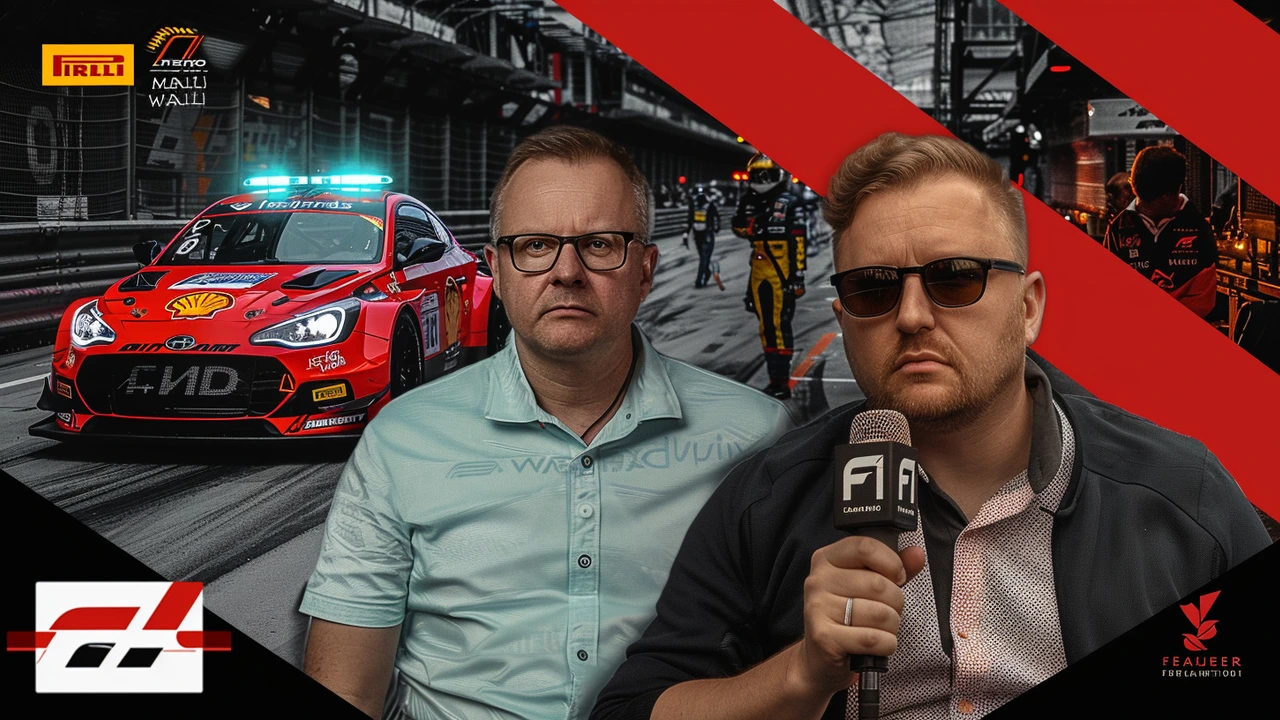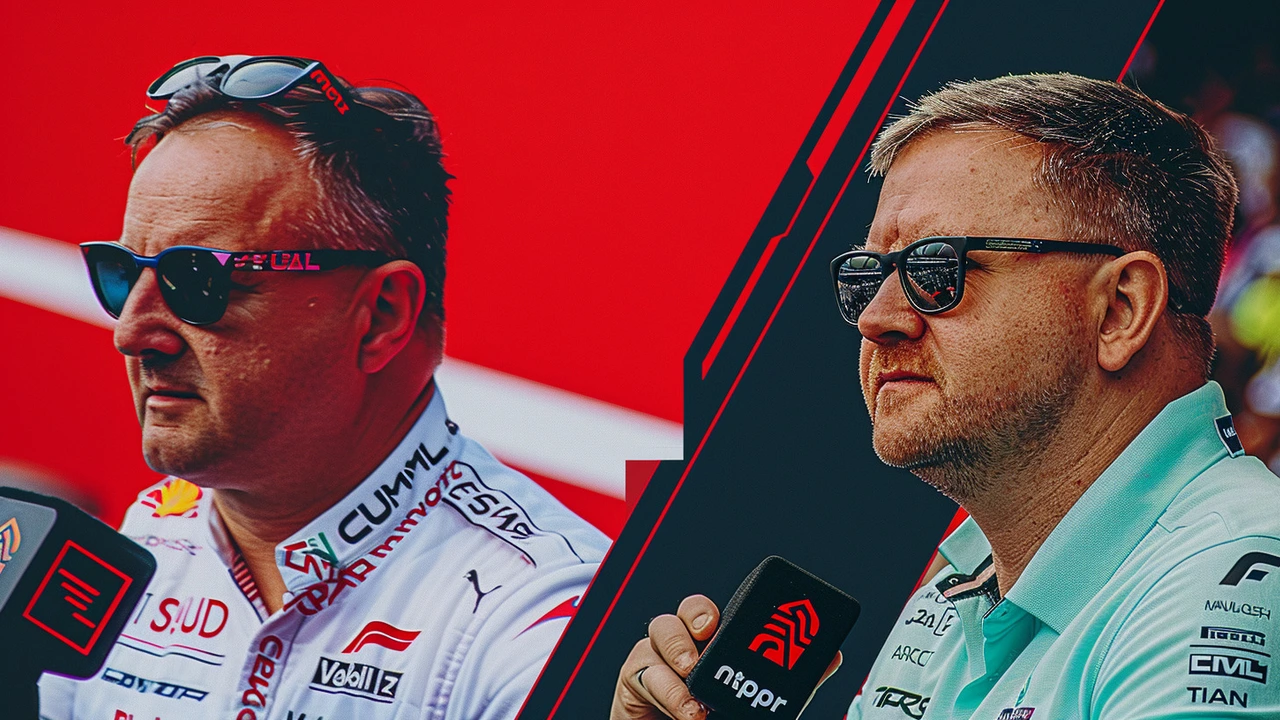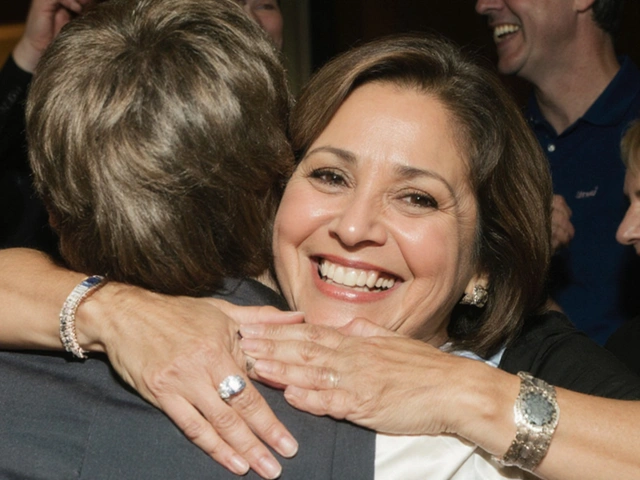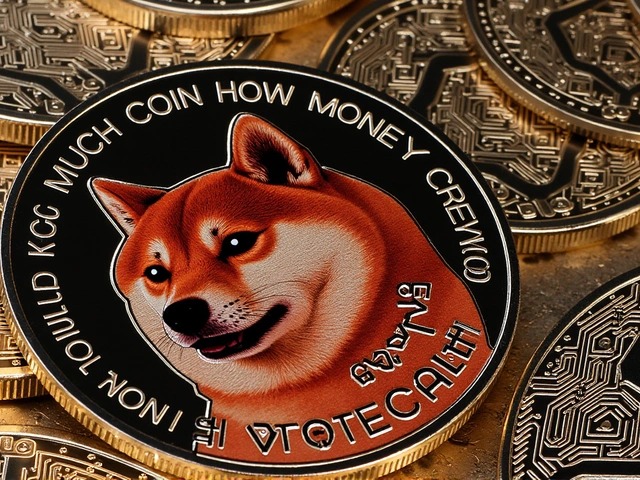The Essential Role of the FIA Safety Car in Formula One
Formula One, the pinnacle of motor racing, is well-known for its high speeds, technical precision, and breathtaking drama on the track. However, amidst the frenzy and competitive spirit, safety remains paramount. Enter the FIA Safety Car, a vehicle often taken for granted by fans but vital for the protection of all involved in the race—drivers, marshals, and spectators alike.
The Safety Car is typically deployed in adverse weather conditions or in the aftermath of an accident. It serves as a buffer, creating a controlled and safer environment while the track is cleared of debris or while rain diminishes to manageable levels. But what makes the Safety Car truly fascinating is the depth and precision behind its operation, far beyond just leading the pack at reduced speeds.
The Decision-Making Behind Deploying the Safety Car
The decision to deploy the Safety Car is not taken lightly. The race director, alongside a team of officials, constantly monitors the track conditions through an array of cameras, sensors, and real-time data feeds. When an incident occurs, they must swiftly evaluate if the severity necessitates the Safety Car. The focus is always on ensuring that any risks are mitigated with a well-reasoned, timely response. Deployment is often prompt, but it also involves clear communication to all teams, drivers, and marshals through radio transmissions and flag signals.
Once the decision has been made, the Safety Car driver, Bernd Maylander, must immediately spring into action. Known for his extensive experience and sharp skills, Maylander is tasked with maintaining a pace that preserves the safety of the track while preventing race cars from losing too much heat in their tires or braking systems. Maylander, who has been at the helm of the Safety Car for over two decades, sums up his role as both a science and an art.

Bernd Maylander: The Man Behind the Wheel
Few people possess the honor and responsibility of driving the Safety Car, and Maylander’s insights offer a fascinating glimpse into this unique role. “It's not just about driving; it's about timing, coordination, and understanding the pulse of the race,” he explains. Maylander's career has provided him with a wealth of experience in various types of cars from the famed AMG-Mercedes to the Aston Martin vehicles specifically designed for F1 Safety Car duties.
Advanced technology is the backbone of the Safety Car, equipped with features such as real-time communication systems, sensors that monitor weather and track conditions, and sophisticated navigational aids. This technology aids Maylander in making split-second decisions that are critical to the safe conduct of the race. So, while the race cars strive for maximum speed and efficiency, the Safety Car stands as a paragon of precision and reliability.
The Safety Car’s Impact on Race Strategy
Beyond safety, the deployment of the Safety Car introduces a strategic element into the race dynamics. When the Safety Car appears, drivers and pit crews must swiftly adapt their strategies. Decisions must be made instantly regarding tire changes, fuel conservation, and positioning. Clever teams see these moments as opportunities to gain an advantage over their rivals, using a brief window to make pit stops without losing precious time. This can drastically alter race outcomes, exemplifying the intricate chess game that F1 races often become.
Driver's Perspective
From the driver's viewpoint, following the Safety Car involves maintaining tire temperatures and managing fuel consumption while staying in close formation. Precision driving is key here, as maintaining a steady rhythm without sudden acceleration or hard braking can make a significant difference. The drivers' communication with their teams becomes vital, as they must relay and receive information swiftly to optimize their strategies upon resumption of racing speeds.
Christian Hewgill’s Onboard Experience
In an exclusive experience, renowned motorsport broadcaster Christian Hewgill took the driver's seat of the Safety Car, providing a fresh perspective on its technological makeup. Alongside Katie Osborne, Hewgill explored the cutting-edge features onboard, from highly responsive communicative systems to visually rich displays that offer real-time data. This level of technological sophistication ensures that the Safety Car is not merely a precautionary measure but an integral part of the overall race safety strategy.
Pit Crew Strategies
For the pit crews, a Safety Car period presents a golden opportunity, but it also involves meticulous preparation and execution. Since teams are allowed to make pit stops during these periods, the sudden influx of cars requires extraordinary coordination. Pit stops must be flawlessly executed to lose the least time possible, making the difference between gaining a position and losing out. It’s a well-orchestrated ballet of speed and precision, highlighting the teamwork behind each driver.

The Vehicles Behind the Safety Car
The vehicles used as Safety Cars are a marvel of engineering and design, selected for their reliability, speed, and advanced technological features. Current models used in F1 include the AMG-Mercedes and Aston Martin vehicles, both iconic brands bringing their unique strengths to the role. These cars are not just fast, sleek, and stylish; they are meticulously engineered to meet the rigorous demands of leading an F1 race at a controlled but brisk pace.
These cars are fitted with high-performance engines and sophisticated electronics. The former ensures they can quickly respond to urgent situations, while the latter provides the necessary telemetry and feedback to monitor race conditions accurately. This blend of high-speed capability and cutting-edge technology makes the Safety Car a critical asset to race safety and integrity.
Looking Forward: The Evolving Role of the Safety Car
As Formula One continues to evolve, so does the role of the Safety Car. Advances in technology, increased awareness of race safety, and evolving regulations ensure that the Safety Car remains an indispensable part of the sport. Its deployment strategies, the technology it houses, and the people who bring it to life all contribute towards its primary goal: ensuring that every race proceeds with utmost safety and fairness.
Reflecting on the future, Bernd Maylander remains optimistic and committed. “In my years of experience, I've seen many changes, but the core mission remains the same—safety. With continuous improvements in technology and strategy, I believe the Safety Car will only become more effective,” Maylander says.
Formula One’s thrilling races often grab headlines, but the unseen heroes like the Safety Car and its driver play a crucial role in maintaining the sport’s impeccable safety standards. As the flag goes up for each race, and engines roar to life, remember that at the heart of this orchestrated chaos is the humble yet powerful Safety Car, quietly ensuring that the world's greatest races can continue unimpeded and safe.







Michelle Roque
June 8, 2024 AT 17:41I never really think about the safety car until it shows up on TV, then I’m like wow, that’s actually pretty cool. It’s crazy how much tech they pack into a car that’s just there to keep everyone safe, not to win races. Guess the unsung heroes really do keep the show running smooth.
Killian Lecrut
June 15, 2024 AT 16:21Honestly, the safety car is the ultimate plot twist of any Grand Prix – just when you think it’s all about speed, bam, an orderly cruise control appears. It’s like the race director’s way of saying “slow down, drama queen!” and we all love the chaos it brings to strategy.
Subi Sambi
June 22, 2024 AT 15:01What a waste of spotlight on the real talent. The article glorifies a driver who’s basically a glorified traffic cop; the real heroes are the engineers and strategists who actually decide the outcome. Fans get led down that safety‑car rabbit hole while the sport’s soul is eroded by corporate PR fluff.
Joshua Rainey
June 29, 2024 AT 13:41Oh sure the safety car is the villain we all love to hate it’s just a glorified pace‑setter with a shiny badge and nobody cares about the real skill behind a race it’s all marketing hype you know
Gail Robb
July 6, 2024 AT 12:21If you think the safety car is just a bureaucratic tool, you’re missing the metaphysical significance of controlled speed in a world obsessed with acceleration. It’s an existential reminder that even in hyper‑velocity we must yield to order, and that thought alone should make you question the very nature of competition.
Pradeep Chabdal
July 13, 2024 AT 11:01While the philosophical musings are interesting, the practical reality remains that the safety car’s engineering marvel is what truly matters. Its integration of telemetry, rapid response capabilities, and driver expertise underscores why teams invest heavily in that seemingly peripheral asset.
andy heri
July 20, 2024 AT 09:41Teamwork is at the heart of every safety‑car deployment. It’s a reminder that success in F1 isn’t just about the driver’s skill, but also about the coordination between engineers, pit crews, and race officials to keep everyone safe.
Jeremy Perlman
July 27, 2024 AT 08:21Exactly, the synchronization required is astonishing-every second counts, and the safety car driver must maintain perfect pace; otherwise, tire temperatures drop, brakes overheat, and the race’s integrity suffers; it’s a delicate balance, and that’s why only the best can handle it.
George Georgakopoulos
August 3, 2024 AT 07:01Don’t forget that the whole system is likely a front for deeper data collection-who knows what telemetry is being harvested and fed into the teams’ strategic algorithms? The safety car could be the ultimate covert surveillance platform, quietly shaping race outcomes from behind the scenes.
Abirami Nagarajan
August 10, 2024 AT 05:41The safety car really does keep the race safe.
shefali pace
August 17, 2024 AT 04:21Absolutely! It’s like the guardian angel of the track, swooping in just when the drama peaks and making sure everyone gets to enjoy the rest of the race without a hitch. The excitement still builds, but now we know someone’s watching our backs.
sachin p
August 24, 2024 AT 03:01I’m curious about how the safety‑car driver communicates with the pit crew during a deployment. Do they have a separate channel, or is it all handled through the race control?
sarthak malik
August 31, 2024 AT 01:41The driver uses a dedicated radio link that’s constantly monitored by race control and the teams. This ensures immediate updates on track conditions, speeds, and any instructions needed to synchronize pit stops and maintain tire temperatures.
Nasrin Saning
September 7, 2024 AT 00:21It’s great to see all the different aspects of the safety car getting attention – from technology to teamwork – it really shows how many moving parts make a race run smoothly.
gaganpreet singh
September 13, 2024 AT 23:01Let us be clear: the glorification of the safety car in this piece is a symptom of a larger moral decay within motorsport journalism. By focusing on the noble veneer of safety, the author distracts us from the unethical commodification of danger that underpins Formula One’s very existence. The sport markets risk as entertainment, exploiting fans’ adrenaline while hiding behind glossy narratives about "precision" and "technology." In reality, the safety car is not a savior; it is a tool wielded by a hierarchy that profits from controlled chaos. When a crash occurs, the resulting media frenzy fuels sponsorship dollars, and the safety car’s deployment merely serves to stall the spectacle, allowing teams to regroup and recalibrate their profit calculations. Moreover, the driver’s role, while undeniably skilled, is subsumed under a corporate agenda that prioritizes image over genuine safety culture. The tire‑temperature management myth is a convenient euphemism for a larger issue: the sport’s reliance on engineered uncertainty.
One must question who truly benefits from the safety car’s presence. Is it the drivers, whose careers hinge on a few seconds of strategic advantage? Or is it the conglomerates that dictate broadcast timing, ensuring that viewership peaks when the tension is highest? The answer is uncomfortably clear – the latter. The article’s casual reverence for Bernd Maylander, while laudable, glosses over the fact that his expertise is commodified, packaged, and sold to a global audience hungry for drama.
Furthermore, the technological marvels described – sensors, real‑time data feeds, advanced communications – are double‑edged swords. They not only enhance safety but also generate massive data streams that can be mined for competitive intelligence, perpetuating an arms race of information that deepens the divide between well‑funded teams and the underdogs. This data asymmetry undermines the sport’s notion of fair play, reinforcing a system where money dictates performance.
In conclusion, the safety car narrative must be examined through a critical lens that acknowledges both its indispensable role and its entanglement with commercial exploitation. Only then can we begin to envision a motorsport environment that truly values safety beyond its marketable veneer.